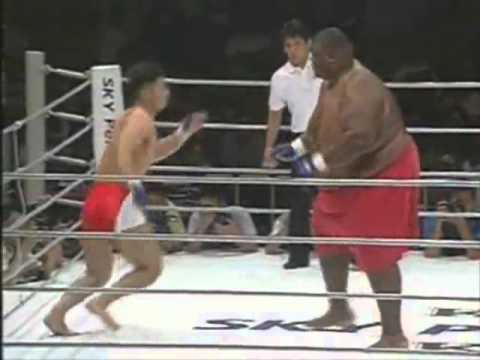The history of mixed martial arts (MMA) is an example of how dominant strategies emerge in adversarial environments. An adversarial environment is one where parties have opposing interests, like in simple games, business, and biology. “Better” ways of doing things will emerge in these environments and will give a material advantage to those who wield it. We see this in biology where eyes have emerged separately in different environments.
In the early days of MMA they used to do take different fighting styles and put them up against each other with (basically) no rules or weight classes. So you’d have Sumo wrestlers, boxers, judo fighters, jiu jitsu, etc. It was CHAOS. The first sanctioned match ended when a judo master put a boxer in a submission, but the boxer didn’t even know that he could tap out and was knocked out cold. The crowd didn’t even know what a submission was and thought maybe the boxer died. So they got very scared or angry and starting throwing things in the arena.

There were also some hilarious mismatches. But one thing became clear very fast – certain fighting styles win nearly every time. Grappling styles like judo, jiu jitsu, etc. DOMINATED against striking styles such as boxing or karate. Basically, if you don’t know how to grapple, then your opponent will take the match “to the ground” where striking is ineffective or impossible. You can’t punch somebody that is too close to you or has a hold of your arm, leg, or neck.
Strikers did have one advantage – if you get punched hard enough in the face you will be knocked unconscious, no matter your grappling skills. Heavyweight boxers with enough KO power, as well as Muay Thai fighters, were able to knock out their opponents sometimes. Muay Thai is a savage striking style utilizing kicks, knees, elbows, and punches. Muay Thai was more effective against strikers, and even some grapplers, for another reason – the brutal kicks and knees. Basically, if you’re not prepared for your opponent to kick you the face – the force of which can be similar to being struck with a wooden baseball bat – then you run a high risk of being KO’d by a kick to the face.

So let’s back up – why are you telling me this? I think it’s a fascinating deconstruction of how these things play out in the wild. We have an even playing field where every fighter is trying their hardest to win. There are few rules and fighters are mostly just constrained by the laws of physics and the mechanics of the human body. They all have prize money and their pride on the line. Winners and losers are very clearly defined. Few scenarios are this simple to deconstruct but all 1v1 games fit this model. Soccer, tic-tac-toe, hand-to-hand combat, war, etc. While you might expect the best fighter to win in this environment, we see that the strategy is sometimes more important than the individual fitness of the fighter.
The world is shaped by some of these dominant strategies. In 1 vs 1 or team vs team type of games, it can be beneficial to have a cohesive unit of highly trained specialists, aka the 300 Spartans in a tight phalanx formation. These days, we can all picture what a skirmish between a police riot team vs an ad hoc group of citizens looks like. Thus we have the reality that centralized nation states with well-trained and well-funded armies (and the same for domestic law enforcement within its borders) are a dominant strategy.
However, in 1 vs many type games, it’s often more individually beneficial to team up with a small group of other individuals and form a cartel that collectively wins against most other participants. Thus we have to deal with the reality that cartels appear and a small group of private interests can win over most everyone else.
Over the years, MMA fighting has converged on its own style, which is a mixture of jiu jitsu and other grappling moves mixed with Muay Thai style striking. Given all the trial and error involved in tuning the most dominant strategy, it’s hard to argue MMA is not the most effective fighting style…unless you’re Chinese.
There is a Chinese MMA fighter Xu Xiaodong currently the victim of a political bout over this. Traditional martial arts are politically favorable in China as a sort of national pride. Traditional masters are held in high regard and some of them let this go to their head. Some make grand claims about their fighting prowess and claim they could beat the best fighters int he world. While there is really nothing wrong with traditional martial arts, these guys can’t really fight. Xu challenges so-called Kung Fu masters to this style vs style type of match and beats them, badly, despite Xu being past his fighting prime.
Xu has paid a significant political price for this but you can’t deny that he is 100% correct – dominant strategies DO exist and you will lose to them if you don’t adapt to them, no matter how badly you wish otherwise.